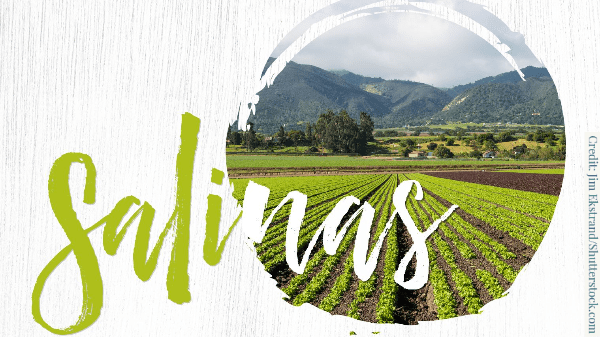The Salinas Valley, like many large parts of the state, is ideal for agriculture.
For its entire history, the produce industry has had to face one major challenge—the semiarid climate, with long patterns of alternating wet spells and dry spells, often extending over several years.
Present-day alternations of wildfires and flash floods may seem aberrant, but they are not.
Legendary author John Steinbeck, writing about the early twentieth century, says, “The water came in a thirty-year cycle. There would be five or six wet and wonderful years when there might be nineteen to twenty-five inches of rain, and the land would shout with grass. Then would come six or seven pretty good years of twelve to sixteen inches of rain. And then the dry years would come, and there would be only seven or eight inches of rain. The land dried up…and great bare scabby places appeared in the valley.”
This picture has not changed. Over the past one hundred years, vast statewide public projects have stabilized the water supply, but it remains something that can never be taken for granted.
Labor and Land
Other issues facing Salinas Valley include labor. For strawberries, Carolyn O’Donnell, communications director for the California Strawberry Commission BB #:153596 says,
“The industry is about 25 percent short of harvest workers. Farmers have been increasing utilization of the federal H-2A guestworker program, which has strict regulations and higher costs.”
“The region is facing tremendous pressures and challenges,” says Christopher Valdez, president of the Grower-Shipper Association of Central California, BB #:162651 ranging from “a lack of affordable housing, which affects domestic workers, to local government impediments to creating housing that is both needed and required to accommodate guest workers and support farm labor needs in the Central Coast region.”
The lack of housing is by no means alien to the region. Everybody has heard about the astronomical cost of San Francisco real estate, where some 73 percent of the households cannot afford housing, but Watsonville, hub of the Salinas strawberry industry, is not far behind at 67 percent, according to a 2016 report by the McKinsey Global Institute.
In California agriculture, particularly in the coastal areas, urbanization complicates the situation further. The time is still in living memory when the Santa Clara Valley was famed as a beauty spot, especially when its vast extents of orchards were in bloom. The region is much more famous now, but not for its beauty. Today it is called Silicon Valley.
Urbanization is not the biggest problem facing the Salinas Valley at this point, but that doesn’t mean this couldn’t come in the future. The city of Salinas is only 59 miles south of San Jose, the Silicon Valley metropolis.
This is multi-part feature adapted from the Salinas Spotlight in the March/April 2020 issue of Produce Blueprints.



